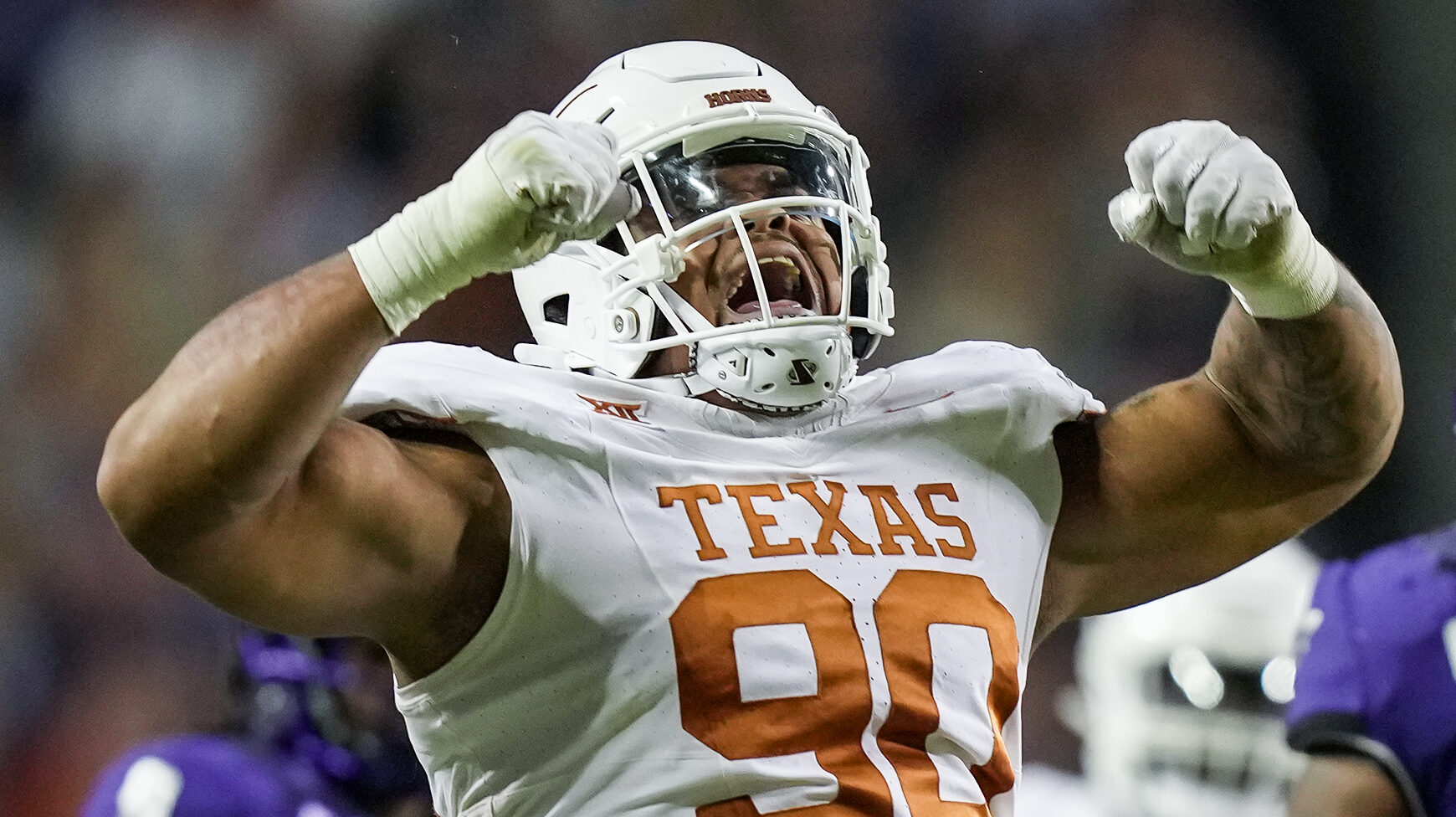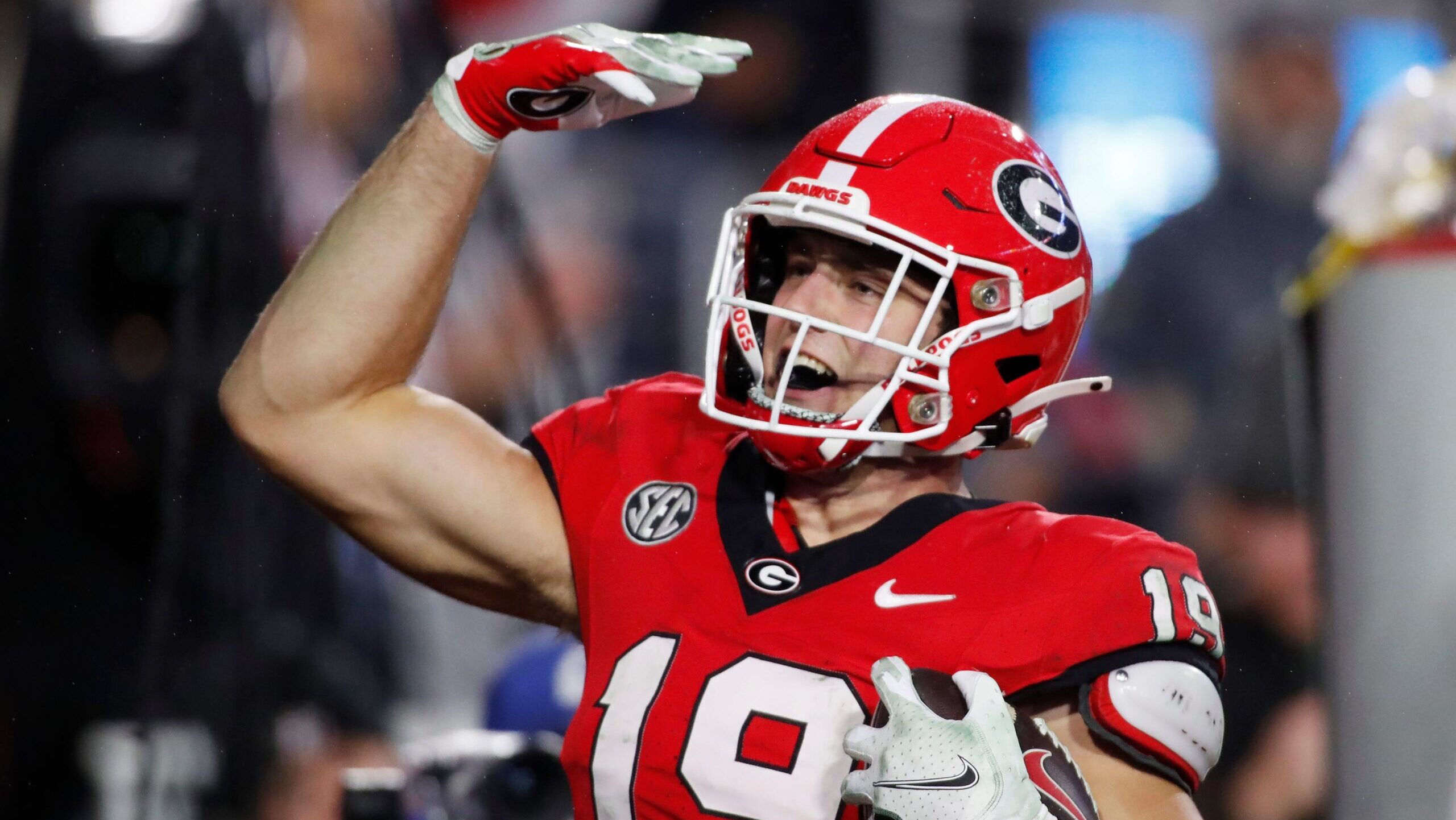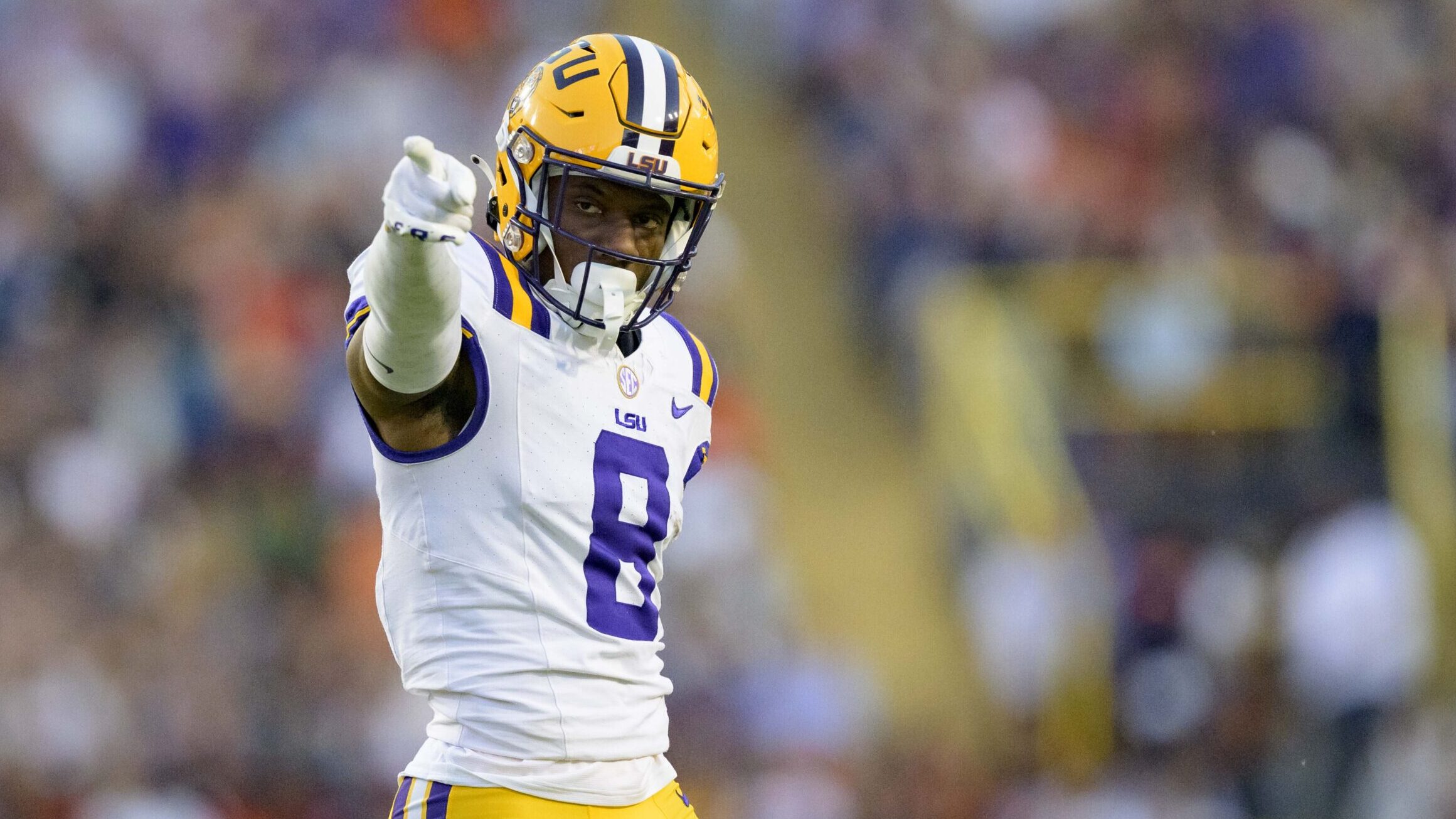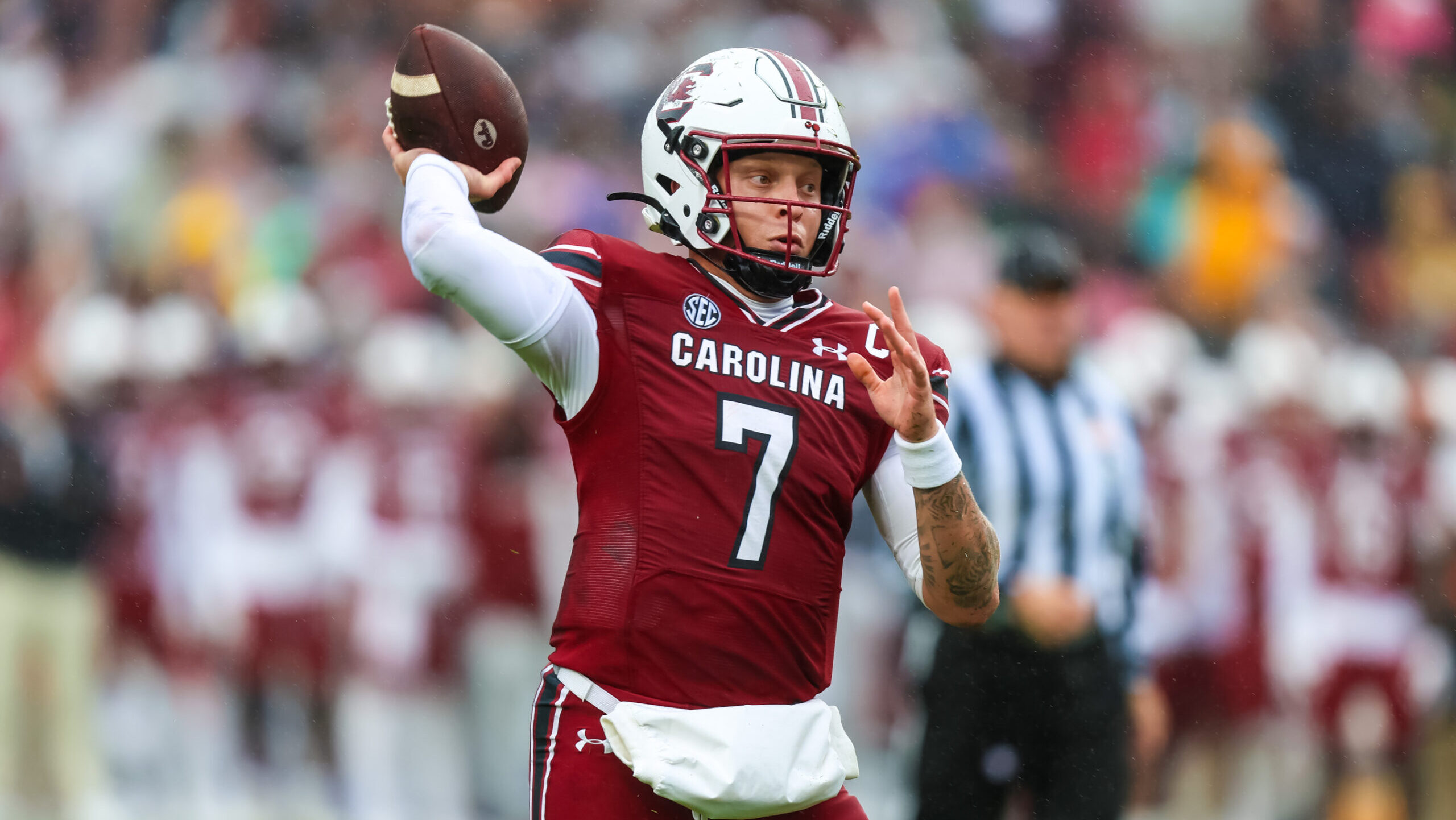Analysis
6/11/22
9 min read
What Rules Would Dean Blandino Change if He Were NFL Commissioner?
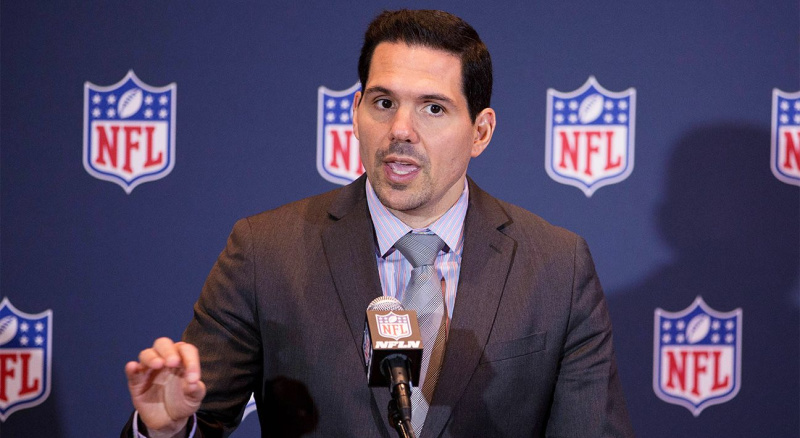
The game of football as we know it is perpetually evolving, requiring rules and regulations to match. However, it takes more time to reflect a change in the rulebook than it does on the gridiron. One must propose a rule before it goes through the vetted NFL Competition Committee, and only if a proposed rule escapes the committee can it be voted on by clubs. If 75% of NFL teams vote to enact the rule or amendment, it becomes a part of the rulebook. The only exception is if there are exigent circumstances that affect the integrity or safety of the game, in which case the NFL Commissioner may pass a new rule unilaterally.
Although the rule enactment and amendment processes are more rigorous than a stroke of the NFL Commissioner’s pen, it is nevertheless an interesting thought experiment. What rules would you change if you could? Former NFL Vice President of Officiating Dean Blandino joined The 33rd Team's Wednesday Huddle this week to chime in on what rules he would change or alter if he could.
“If I were Commissioner for a day, after giving everybody in the officiating department a raise, there are a few things that I would cover,” Blandino said. “The game has evolved and changed so much.”
After all, any team’s responsibility is to adapt and increase their chance of winning football games — within the rules, of course. Inevitably, the guidelines dictating play on the field must adapt too.
“Some of our rules are probably outdated,” said Blandino. “I feel like this one: the first touch rule. It is a complicated rule, and I do not think that fans and media, even coaches and players, understand all the ramifications [of the rule].”
Typically demonstrated on punts, the first touch rule attempts to dissuade kicking team players from touching the ball before the receiving team does. Thus, if a kicking team player touches the ball before a receiving team player, the receiving team may continue the down by returning it. The receiving team may also place the ball at the spot of the first touch if they so choose, regardless of the outcome of the down, so long as there is no penalty on the play. Essentially, touching the ball on a punting play as a kicking team player is a violation, but not a foul, a rare rule.
“The genesis of this rule years ago was to incentivize the return and prevent the kicking team from downing the football,” he said. “If you think about health, safety, and where we are with the punt return, I do not think the league is looking to incentivize punt returns.”
The league has shown a desire to decrease the number of kicks returned, primarily because of the high-impact collisions that return plays tend to produce. For example, the league extended the amount of yardage awarded for touchbacks and decreased the length of the field on kickoffs. Doing away with the first touch rule would be compatible with those rule changes and perhaps reduce the likelihood of injuries on a given punt play.
“The next one, which might be a little more drastic, is interlocking legs on field goal extra points,” he said. “The proposal would be to eliminate interlocking legs on extra points.”
Interlocking legs on field-goal attempts is something that has “been allowed forever,” but that does not necessarily mean it is best practice. Essentially, the blockers on field-goal attempts may stagger themselves so that their legs overlap. This eliminates any gaps for the defense to pursue, resulting in far fewer blocks or pressures.
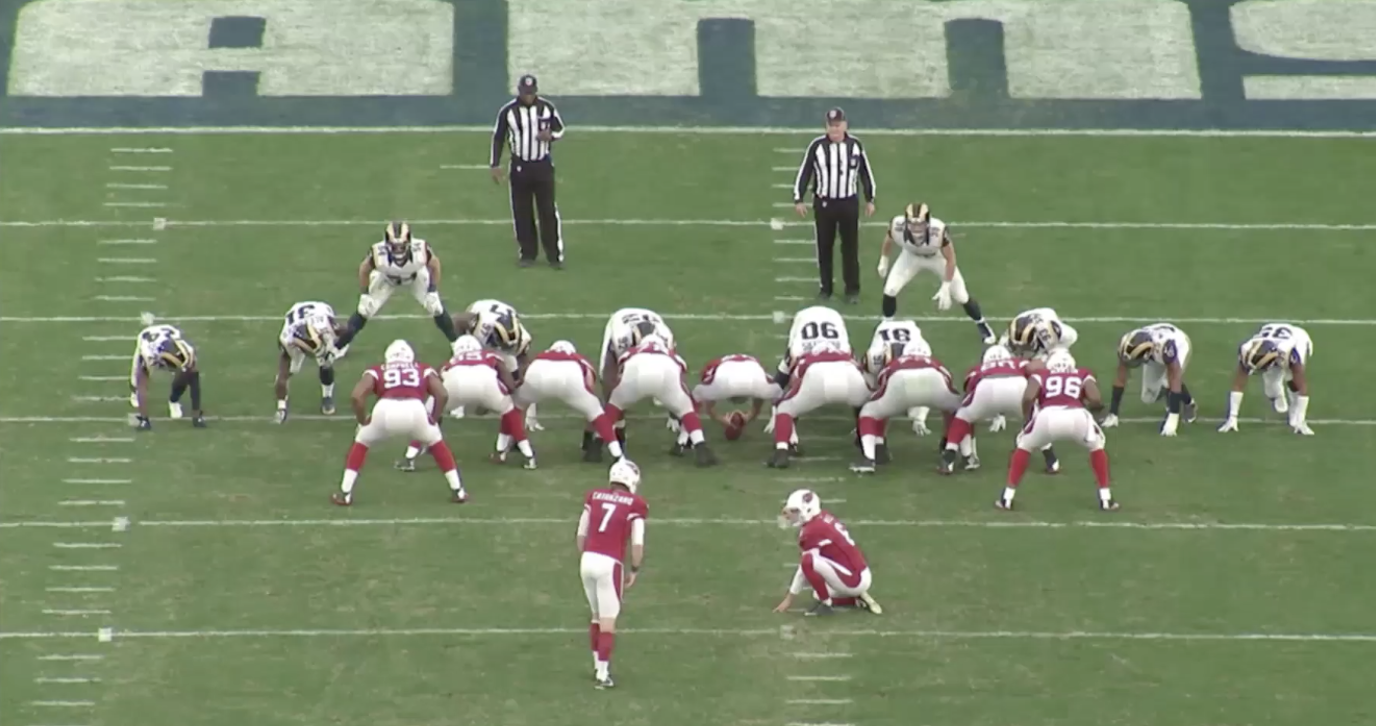
“Now we are seeing plays where a player attempts to leap over the offensive lineman, and that becomes a dangerous play,” Blandino said. “Six rule changes since 2010 have restricted the defense on field goals and extra points, so if we eliminated interlocking legs and made it more of a regular football play, I think it would be more exciting.”
Right now, 85% of all field goal attempts and 65% of 50+ yard field goal attempts in the NFL are successful. By comparison, only 63% of all field goal attempts in 1981 were successful. NFL teams today are making 50+ yard field goals at a higher clip than NFL teams were making any field goal in 1981.
“It might be drastic, but if we took away the interlocking legs and make it more of a regular football play, it would be more exciting, we would have more blocks, and we would do away with special rules [restricting the defense],” he said. “The next rule I would change is the low block rule.”
This rule was recently implemented, creating a “tight end box.” The tight end box spans from the weak-side, and strong-side tight end spots and is five yards long on either side of the ball. Within that space, offensive players are allowed to block low, so long as they do not violate other rules such as chop blocking, peel blocking, or clipping.

“The league is trying to protect defensive players from dangerous low blocks out in space which have a higher potential for injury,” he said. “Inevitably, you might want to get [dangerous, open-field low blocks] out of the game, but there are going to be other blocks that are going to be fouls, and they should not be.”
Whenever a bright-line rule is adopted, it is easy to implement because it is unambiguous. The problem is that not every low block outside the tight end box is dangerous. Therefore, this rule disadvantages the offense on run plays — particularly outside zone runs that inherently develop outside the tight end box.
“The other issue with this rule is that it puts the smaller, defensive players at a disadvantage,” he said. “To make a tackle on the run, smaller players do not have a lot that they can do. Their only option other than getting run over is to go low.”
In a way, this rule does not minimize the risk to player safety overall. It eliminates a potential source of injury but opens the door to another by forcing offensive lineman and other blockers to remain upright outside the tight end box.
“The proposed change would be rather than tight end to tight end, to extend the box to the sideline, so your low blocking zone would be sideline to sideline with five yards on either side of the ball,” he said. “That would allow for some of those blocks out in space that are not really safety issues, and it would allow the defense to have more of an opportunity to protect themselves.”
The following rule change that Blandino discussed pertains to instant replay in the NFL. Since replay came back to the NFL in 1999, there has been a struggle between two ideals or standards for utilizing that technology to supplement officiating.
“There are really two ends of the spectrum,” he said. “One was ‘get it right [always],’ and the other standard was to correct obvious mistakes on game-changing and season-changing plays.”
To illustrate the latter standard, Blandino referred to a 1998 matchup between the New York Jets and Seattle Seahawks. In that game, the Jets were losing 31-26. On fourth and goal-to-go with 20 seconds remaining, Vinny Testaverde tucked it and took off up the middle for the endzone. Although video replay clearly shows that Testaverde was short of the goal line, the NFL did not have instant replay then, and the on-field officials ruled it a touchdown. The “game-winning touchdown” by Testaverde cost the Seahawks a playoff spot that year.
“NFL Officiating went with correcting obvious mistakes in game-changing and season-changing situations, and there was built-in equity to that system,” he said. “Every team, each coach had two challenges, and that was it, so it was equal on both sides.” Yet, in the NFL today, far from just four plays each game are reviewed via instant replay by the officials.
“The thing is, we have drifted so far away from that over the years. We have to address a play here, a complaint there,” he said.
Professional sports often have a lot on the line. In some circumstances, a playoff berth, a head coaching job, or a playoff win, just to name a few. In the NFL, sometimes officials make errors simply because they could not possibly see the vital piece of the play without instant replay. So, NFL Officiating made exceptions to the standard.
“What we have seen is ‘Okay, this play happens, we are going to make this reviewable,’ or a coach runs out of challenges and there was a touchdown that was incorrect, so we are going to make scoring plays and turnovers automatically reviewable.
“What we ended up with is a patchwork system that is no longer adhering to that guiding principle.”
The result is that officials are now getting real-time information from the booth. Even though each team has an equal number of challenges, instant replay may favor one team over another because of this shift towards using instant replay outside of challenge scenarios. Therefore, the “built-in” equity or exclusivity is gone, and plays that do not have season-changing or game-changing implications are reviewed regardless.
“[If we are not going to limit reviewable plays to challenges only], I think you would have to limit it to plays where there is some objective aspect to it,” he said. “Truly subjective calls like holding are very difficult to administer and replay because those rules are written for on-field officials to make decisions in real-time. Any time you slow it down and go frame by frame, it will look different.”
Overall, Blandino believes that the NFL must return to a “guiding principle” when reviewing plays via instant replay, whatever that may be. There are nuanced inequities in the usage of instant replay today. The rules governing instant replay have not yet found a resting spot, and they are unlikely to remain static soon.
With Blandino’s proposed changes, the NFL would be different, albeit in a subtle way. Moreover, he shed some light on what he believes to be the most significant barriers to the best football in the NFL. One thing is for sure, though. The rules will never stop evolving.


